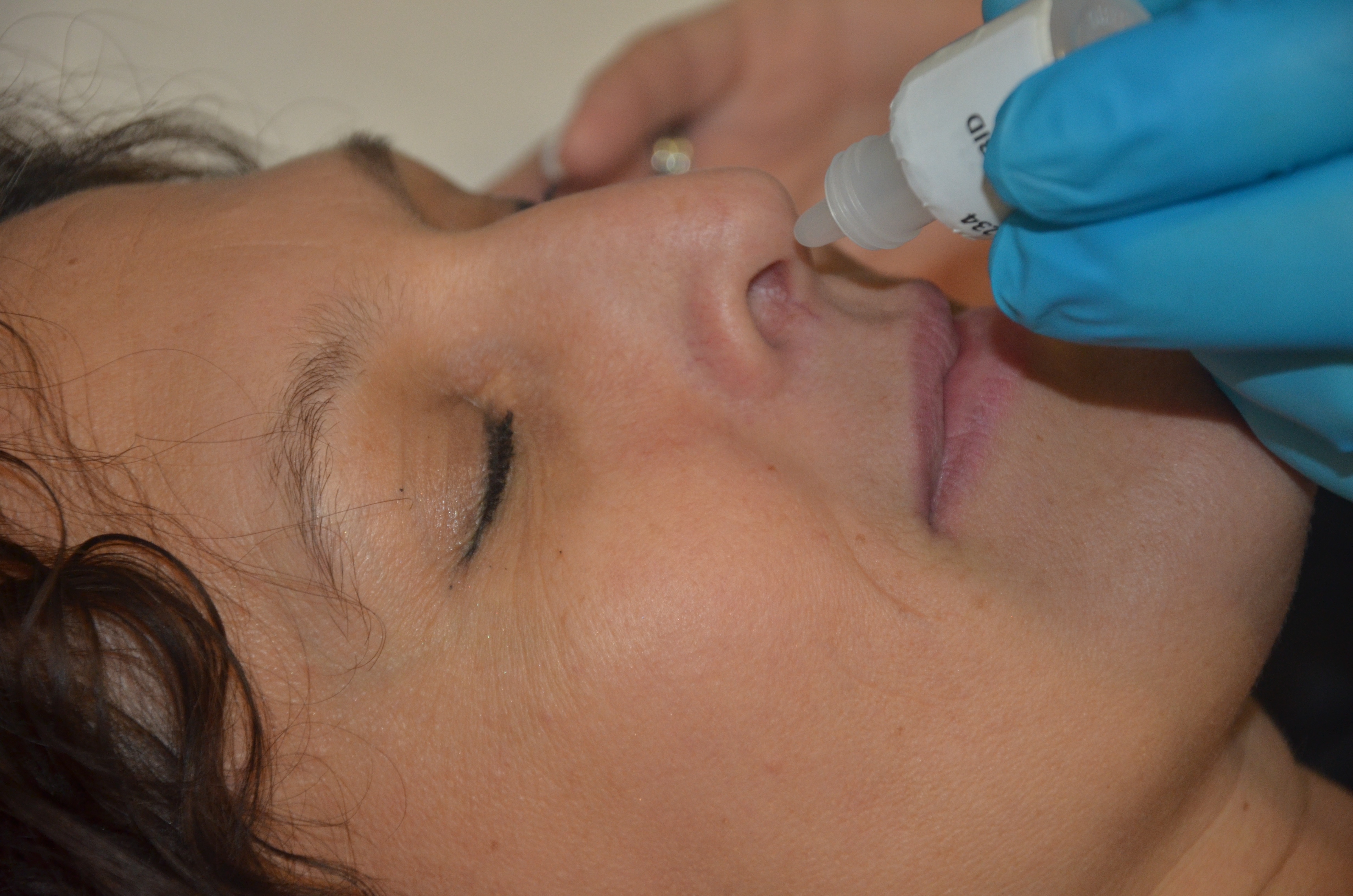|
Zoopharmacognosy
Zoopharmacognosy is a behaviour in which non-human animals self-medication, self-medicate by selecting and Ingestion, ingesting or Topical medication, topically applying plants, soils and insects with medicinal properties, to prevent or reduce the harmful effects of pathogens, toxins, and even other animals. The term derives from Greek roots ''zoo'' ("animal"), ''pharmacon'' ("drug, medicine"), and ''gnosy'' ("knowing"). An example of zoopharmacognosy occurs when dogs eat grass to induce vomiting. However, the behaviour is more diverse than this. Animals ingest or apply non-foods such as clay, charcoal and even toxicity, toxic plants and invertebrates, apparently to prevent parasite, parasitic infestation or poisoning. Whether animals truly self-medicate remains a somewhat controversial subject because early evidence is mostly circumstantial or anecdotal. However, more recent examinations have adopted an experimental, hypothesis-driven approach. The methods by which animal ... [...More Info...] [...Related Items...] OR: [Wikipedia] [Google] [Baidu] |
Psychoactive Drugs
A psychoactive drug, psychopharmaceutical, mind-altering drug, consciousness-altering drug, psychoactive substance, or psychotropic substance is a chemical substance that alters psychological functioning by modulating central nervous system activity. Psychoactive and psychotropic drugs both affect the brain, with psychotropics sometimes referring to psychiatric drugs or high-abuse substances, while “drug” can have negative connotations. Novel psychoactive substances are designer drugs made to mimic illegal ones and bypass laws. Psychoactive drug use dates back to prehistory for medicinal and consciousness-altering purposes, with evidence of widespread cultural use. Many animals intentionally consume psychoactive substances, and some traditional legends suggest animals first introduced humans to their use. Psychoactive substances are used across cultures for purposes ranging from medicinal and therapeutic treatment of mental disorders and pain, to performance enhancement. Th ... [...More Info...] [...Related Items...] OR: [Wikipedia] [Google] [Baidu] |
Secondary Metabolite
Secondary metabolites, also called ''specialised metabolites'', ''secondary products'', or ''natural products'', are organic compounds produced by any lifeform, e.g. bacteria, archaea, fungi, animals, or plants, which are not directly involved in the normal cell growth, growth, Biological development, development, or reproduction of the organism. Instead, they generally mediate ecological biological interaction, interactions, which may produce a Natural selection, selective advantage for the organism by increasing its survivability or fecundity. Specific secondary metabolites are often restricted to a narrow set of species within a phylogenetic group. Secondary metabolites often play an important role in plant defense against herbivory and other interspecies defenses. Humans use secondary metabolites as medicines, flavourings, pigments, and recreational drugs. The term secondary metabolite was first coined by Albrecht Kossel, the 1910 Nobel Prize laureate for medicine and physio ... [...More Info...] [...Related Items...] OR: [Wikipedia] [Google] [Baidu] |
Bertiella Studeri
''Bertiella studeri'' is a species of ''Bertiella (flatworm), Bertiellia'', a type of cestodes (tapeworms). It is a parasite of primates which was first described in the rhesus macaque (''Rhesus macaque, Macaca mulatta'') in 1940. The intermediate host are Oribatida, oribatid mites, which ingest the eggs, and are themselves ingested by the vertebrate host. Oribatid mites infected with Bertiella transfer the developmental cysticercoid stage to a human host through tissue feeding. This is one of two species of ''Bertiella'' that cause Bertielliasis in humans (the other being ''Bertiella mucronata''). The majority of human cases occur in individuals who have some level of contact with non-humanprimates. Geographic distribution of cases demonstrate ''Bertiellia'' infection within countries from Asia, Africa, and the Americas. Morphology An adult ''B. studeri'' tapeworm measures 10–30 cm long, and is 1 cm wide. The adult develops in the small intestine of the primate hos ... [...More Info...] [...Related Items...] OR: [Wikipedia] [Google] [Baidu] |
Oesophagostomum
''Oesophagostomum'' is a genus of parasitic nematodes (roundworms) of the family Strongylidae. These worms occur in Africa, Brazil, China, Indonesia and the Philippines. The majority of human infection with ''Oesophagostomum'' is localized to northern Togo and Ghana. Because the eggs may be indistinguishable from those of the hookworms (which are widely distributed and can also rarely cause helminthomas), the species causing human helminthomas are rarely identified with accuracy. ''Oesophagostomum'', especially ''O. bifurcum'', are common parasites of livestock and animals like goats, pigs and non-human primates, although it seems that humans are increasingly becoming favorable hosts as well. The disease they cause, oesophagostomiasis, is known for the nodule formation it causes in the intestines of its infected hosts, which can lead to more serious problems such as dysentery. Although the routes of human infection have yet to be elucidated sufficiently, it is believed that transm ... [...More Info...] [...Related Items...] OR: [Wikipedia] [Google] [Baidu] |
Nematode
The nematodes ( or ; ; ), roundworms or eelworms constitute the phylum Nematoda. Species in the phylum inhabit a broad range of environments. Most species are free-living, feeding on microorganisms, but many are parasitic. Parasitic worms (helminths) are the cause of soil-transmitted helminthiases. They are classified along with arthropods, tardigrades and other moulting animals in the clade Ecdysozoa. Unlike the flatworms, nematodes have a tubular digestive system, with openings at both ends. Like tardigrades, they have a reduced number of Hox genes, but their sister phylum Nematomorpha has kept the ancestral protostome Hox genotype, which shows that the reduction has occurred within the nematode phylum. Nematode species can be difficult to distinguish from one another. Consequently, estimates of the number of nematode species are uncertain. A 2013 survey of animal biodiversity suggested there are over 25,000. Estimates of the total number of extant species are su ... [...More Info...] [...Related Items...] OR: [Wikipedia] [Google] [Baidu] |
Aspilia
''Aspilia'' is a genus of flowering plants in the family Asteraceae. ''Aspilia'' is native to sub-Saharan Africa, Madagascar, Yemen, and tropical South America. Some authors have merged this genus with '' Wedelia'', but others maintain that more study is required. Medicinal uses Historically, '' Aspilia africana'' was used in Mbaise and most Igbo speaking parts of Nigeria to prevent conception, suggesting potential contraceptive and anti-fertility properties. Leaf extract and fractions of ''A. africana'' effectively arrested bleeding from fresh wounds, inhibited microbial growth of known wound contaminants and accelerated wound healing process. ''Aspilia'' is hypothesized to be used as herbal medicine by some chimpanzees The chimpanzee (; ''Pan troglodytes''), also simply known as the chimp, is a species of great ape native to the forests and savannahs of tropical Africa. It has four confirmed subspecies and a fifth proposed one. When its close relative the ....Raffa ... [...More Info...] [...Related Items...] OR: [Wikipedia] [Google] [Baidu] |
Curative Care
Curative care or curative medicine is the health care given for medical conditions where a cure is considered achievable, or even possibly so, and directed to this end. Curative care differs from preventive care, which aims at preventing the appearance of diseases through pharmaceuticals and such techniques as immunization, exercise, proper eating habits and other life style issues, and from palliative care, which concentrates on reducing the severity of symptoms, such as pain Pain is a distressing feeling often caused by intense or damaging Stimulus (physiology), stimuli. The International Association for the Study of Pain defines pain as "an unpleasant sense, sensory and emotional experience associated with, or res .... References Medical treatments {{treatment-stub ... [...More Info...] [...Related Items...] OR: [Wikipedia] [Google] [Baidu] |
Prophylactic
Preventive healthcare, or prophylaxis, is the application of healthcare measures to prevent diseases.Hugh R. Leavell and E. Gurney Clark as "the science and art of preventing disease, prolonging life, and promoting physical and mental health and efficiency. Leavell, H. R., & Clark, E. G. (1979). Preventive Medicine for the Doctor in his Community (3rd ed.). Huntington, NY: Robert E. Krieger Publishing Company. Disease and disability are affected by environmental factors, genetic predisposition, disease agents, and lifestyle choices, and are dynamic processes that begin before individuals realize they are affected. Disease prevention relies on anticipatory actions that can be categorized as primal, primary, secondary, and tertiary prevention. Each year, millions of people die of preventable causes. A 2004 study showed that about half of all deaths in the United States in 2000 were due to preventable behaviors and exposures. Leading causes included cardiovascular disease, chroni ... [...More Info...] [...Related Items...] OR: [Wikipedia] [Google] [Baidu] |
Topical Application
A topical medication is a medication that is applied to a particular place on or in the body. Most often topical medication means application to body surfaces such as the skin or mucous membranes to treat ailments via a large range of classes including creams, foams, gels, lotions, and ointments. Many topical medications are epicutaneous, meaning that they are applied directly to the skin. Topical medications may also be inhalational, such as asthma medications, or applied to the surface of tissues other than the skin, such as eye drops applied to the conjunctiva, or ear drops placed in the ear, or medications applied to the surface of a tooth. The word ''topical'' derives from Greek τοπικός ''topikos'', "of a place". Justification Topical drug delivery is a route of administering drugs via the skin to provide topical therapeutic effects. As skin is one of the largest and most superficial organs in the human body, pharmacists utilise it to deliver various drug ... [...More Info...] [...Related Items...] OR: [Wikipedia] [Google] [Baidu] |
Trichome
Trichomes (; ) are fine outgrowths or appendages on plants, algae, lichens, and certain protists. They are of diverse structure and function. Examples are hairs, glandular hairs, scales, and papillae. A covering of any kind of hair on a plant is an indumentum, and the surface bearing them is said to be Leaf#Surface, pubescent. Algal trichomes Certain, usually filamentous, algae have the terminal cell (biology), cell produced into an elongate hair-like structure called a trichome. The same term is applied to such structures in some cyanobacteria, such as ''Spirulina (dietary supplement), Spirulina'' and ''Oscillatoria''. The trichomes of cyanobacteria may be unsheathed, as in ''Oscillatoria'', or sheathed, as in ''Calothrix''. These structures play an important role in preventing soil erosion, particularly in cold desert climates. The filamentous sheaths form a persistent sticky network that helps maintain soil structure. Plant trichomes Plant trichomes have many diff ... [...More Info...] [...Related Items...] OR: [Wikipedia] [Google] [Baidu] |
Chemotaxis
Chemotaxis (from ''chemical substance, chemo-'' + ''taxis'') is the movement of an organism or entity in response to a chemical stimulus. Somatic cells, bacteria, and other single-cell organism, single-cell or multicellular organisms direct their movements according to certain chemicals in their environment. This is important for bacteria to find food (e.g., glucose) by swimming toward the highest concentration of food molecules, or to flee from poisons (e.g., phenol). In multicellular organisms, chemotaxis is critical to early development (e.g., movement of sperm towards the egg during fertilization) and development (e.g., migration of neurons or lymphocytes) as well as in normal function and health (e.g., migration of White blood cell, leukocytes during injury or infection). In addition, it has been recognized that mechanisms that allow chemotaxis in animals can be subverted during cancer metastasis, and the aberrant change of the overall property of these networks, which contro ... [...More Info...] [...Related Items...] OR: [Wikipedia] [Google] [Baidu] |
Phytochemical
Phytochemicals are naturally-occurring chemicals present in or extracted from plants. Some phytochemicals are nutrients for the plant, while others are metabolites produced to enhance plant survivability and reproduction. The fields of extracting phytochemicals for manufactured products or applying scientific methods to study phytochemical properties are called ''phytochemistry''. An individual who uses phytochemicals in food chemistry manufacturing or research is a ''phytochemist''. Phytochemicals without a nutrient definition have no confirmed biological activities or proven health benefits when consumed in plant foods. Once phytochemicals in a food enter the digestion process, the fate of individual phytochemicals in the body is unknown due to extensive metabolism of the food in the gastrointestinal tract, producing phytochemical metabolites with different biological properties from those of the parent compound that may have been tested in vitro. Further, the bioavaila ... [...More Info...] [...Related Items...] OR: [Wikipedia] [Google] [Baidu] |







